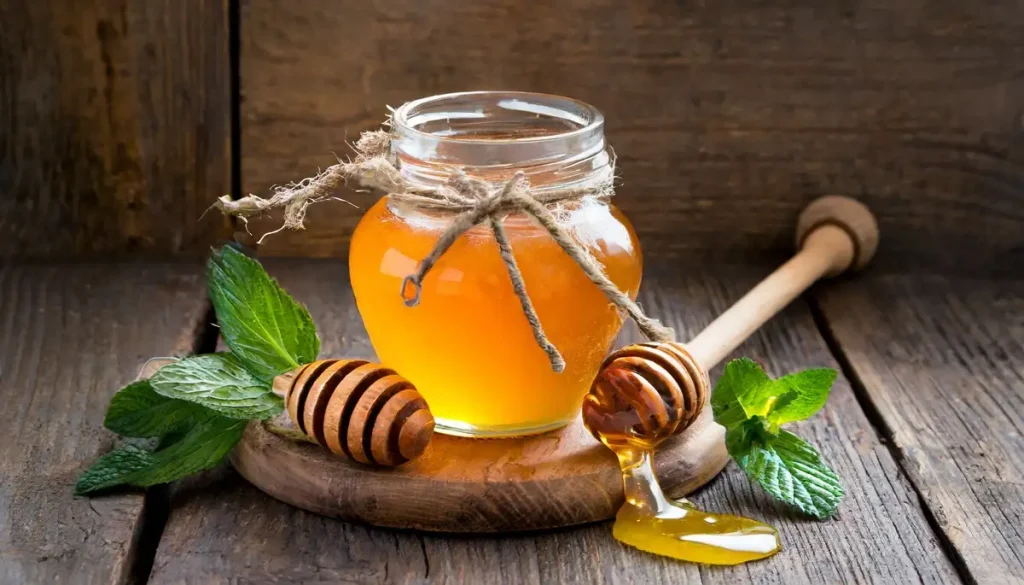Table of Contents
Beekeeping is an enjoyable and rewarding activity that can yield significant benefits, such as producing high-quality honey and helping to pollinate crops. However, like any other agricultural practice, beekeeping requires effort, dedication, and patience, and it is not always a straightforward task. Even the most experienced beekeepers face challenges that can affect the productivity of their hives.
In an ideal world of beekeeping, you would have a beehive full of healthy bees producing delicious honey that you can either keep for yourself or sell for extra income. However, in reality, several factors can affect the honey yield in your hive. Bees require certain conditions to produce honey, and if these conditions are not met, the yield may be low or non-existent. Some of the reasons why bees are not producing honey are:
Inadequate Food and Water Supply
Bees need a steady supply of nectar and pollen to produce honey. If the nectar flow is low or interrupted, such as during a drought, the bees may not have enough food to produce honey. Similarly, if the bees do not have access to a clean and reliable source of water, they may not be able to produce honey.
Disease and Pests
Bees can be affected by various diseases and pests that can reduce their productivity. Some common diseases that can affect honey production include American foulbrood, European foulbrood, and chalkbrood. Parasites such as varroa mites can also weaken and kill bees, leading to a reduced honey yield.
Queen Issues
The queen bee is responsible for laying eggs, which hatch into worker bees that collect nectar and produce honey. If the queen is not healthy or not laying enough eggs, the hive’s productivity may decrease.
Weather Conditions
The weather can also impact honey production. Cold temperatures, strong winds, and excessive rain can all affect the bees’ ability to collect nectar and produce honey. Similarly, extreme heat or drought can also impact the bees’ productivity.
Insufficient Hive Management
Beekeeping requires proper hive management, including regular inspections and maintenance. Failure to manage the hive correctly can lead to a decline in productivity and if left unchecked, can lead to the loss of the hive entirely.
So while beekeeping can be a rewarding activity it requires effort, patience, and proper management. Even with the best intentions things can go wrong and the productivity of the hive can be affected. Understanding the reasons why there might be no honey in your beehive can help you take appropriate measures to prevent or mitigate these issues and ensure a productive and healthy hive. The rest of this article will delve deeper into some of the topics discussed in the above paragraphs.
Honey is Really for the Bees, Not Us
Bees produce honey for very specific reasons, and it may not come as a surprise to many people that human consumption is not one of them! Fundamentally, honey is food for bees, but it is created and consumed as part of a complex yet highly efficient process. Honey starts life as nectar, transferred to the hive by foraging worker bees (who occasionally consume a little for their own needs). Back at the hive, the nectar’s moisture level is decreased from around 70% to 20% during a process that sees the nectar partially digested as it is passed between bees from mouth to mouth before being placed in honey cells. Once inside the cells, the constant fanning and heat from the motion of many thousands of bees leads to further water evaporation and, hey presto, there’s your honey.
Delicious as it is, honey’s natural function is the feeding of bees, not humans. What makes bees one of nature’s great gifts though is that that they are biologically programmed to produce more than they need. For there to be a harvestable surplus a colony needs to cover its basic needs first. Honey is there to sustain a colony throughout the winter months when there is no nectar flow to speak of. In the summer, it is used to feed larvae, either directly as a component of “bee bread” (a honey-pollen mix) or indirectly as nourishment for the nurse bees, which excrete the various substances used to feed the colony. Only after this task is completed will honey be placed into combs and capped with beeswax.
This then is the fundamental reason behind honey shortage in hives – the bees have simply used all they have. This is a state of affairs that can be influenced by all sorts of other factors though, some of which you can do something about; others you cannot.
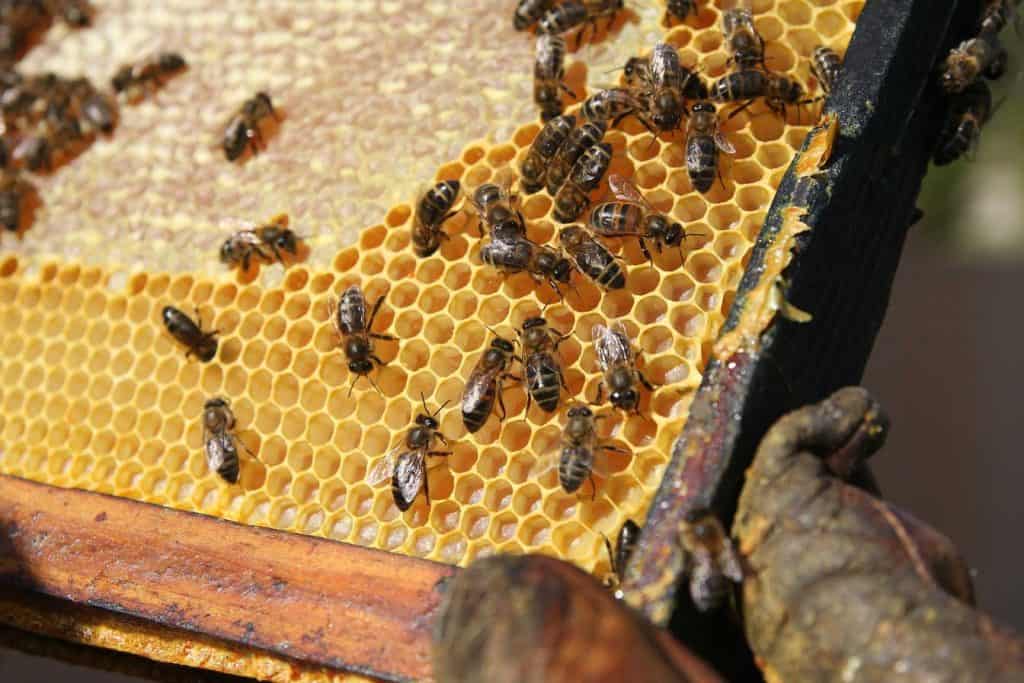
Is Something Wrong with the Hive When no Honey is Found?
When you are not finding honey in your beehive, you might automatically assume that there is something wrong. For the most part, the cause is usually incorrect conditions within the hive. There can be many reasons for this, including extreme temperatures and pests. Nevertheless, when it comes to a new hive, it could simply be the case that the bees are simply not producing enough honey to feed themselves with some to spare.
- Carter, Anthony (Author)
- English (Publication Language)
- 194 Pages - 02/28/2024 (Publication Date) - Independently published (Publisher)
When you get a new hive, you need to give it time for the bees to establish a pattern of producing honey. Before the bees begin storing surplus honey, they will concentrate on raising their young. This means building brood comb and collecting food to feed the brood. The workers will also need plenty of honey for energy when out collecting nectar. Once the hive has been firmly established, you are then likely to see the amount of honey in the hive increasing. It will just be a case of being a little patient.
If you already have an established hive that has stopped producing surplus honey, it is important to check for causes of the decreased production.
Low Bee Population (or Population Decline) Affecting Honey Production
One of the most basic and obvious reasons for low honey production is simply a matter of workforce size. Honey production is a labor-intensive industry, and you will need enough bees (specifically worker bees as drones have no part in this process) if there is to be any harvestable surplus.
As I already mentioned, it takes some time for colonies to become established and start producing surplus honey. However, there is more to this process than simple bee numbers as bees need time to adjust to a particular area and scout out enough nectar over the full stretch of the season. This is one of the reasons why it is not wise to expect any honey in your first year of beekeeping.
A low population or population decline is a more specific problem that is best diagnosed after the first year in colonies that have previously been established. The cause of a low bee population or a decline in numbers could be any number of diverse factors. One of the most common reasons though is that the general energy of the hive is low. This in turn causes all sorts of other problems, such as an unproductive queen or inefficient nurse bees without the energy to excrete the food needed to raise larvae.
In such cases, the obvious solution is to feed the bees. Given an appropriate amount of sugar syrup, this should remedy the general lack of energy. If the numbers do not increase at this point, then the problem almost certainly lies with the queen; she may be sick, old, or otherwise unproductive. A healthy colony with a sick queen will usually expel her, so you might need to requeen in such instances. Your colony population should be the first thing you check before considering other causes for low honey production, as it is the easiest cause to both identify and to rule out.
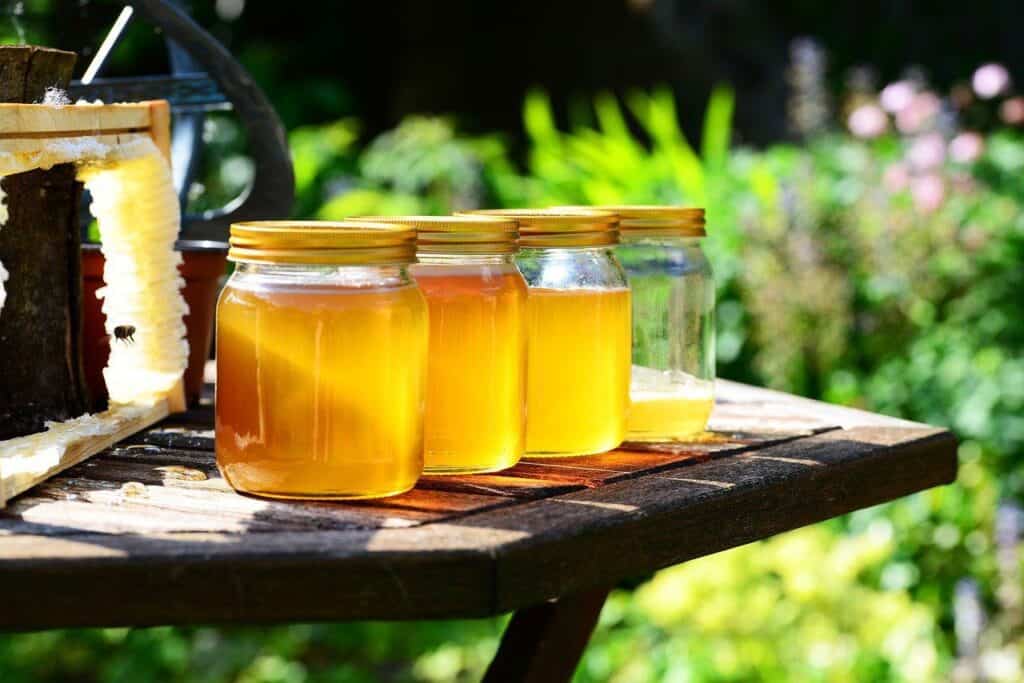
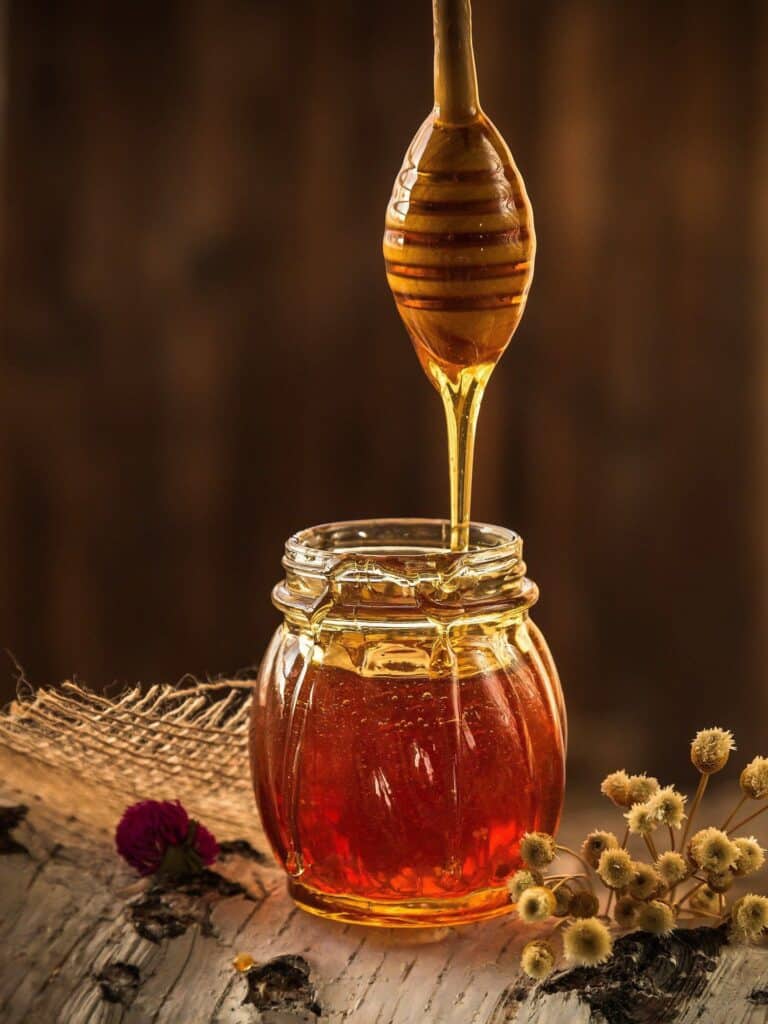
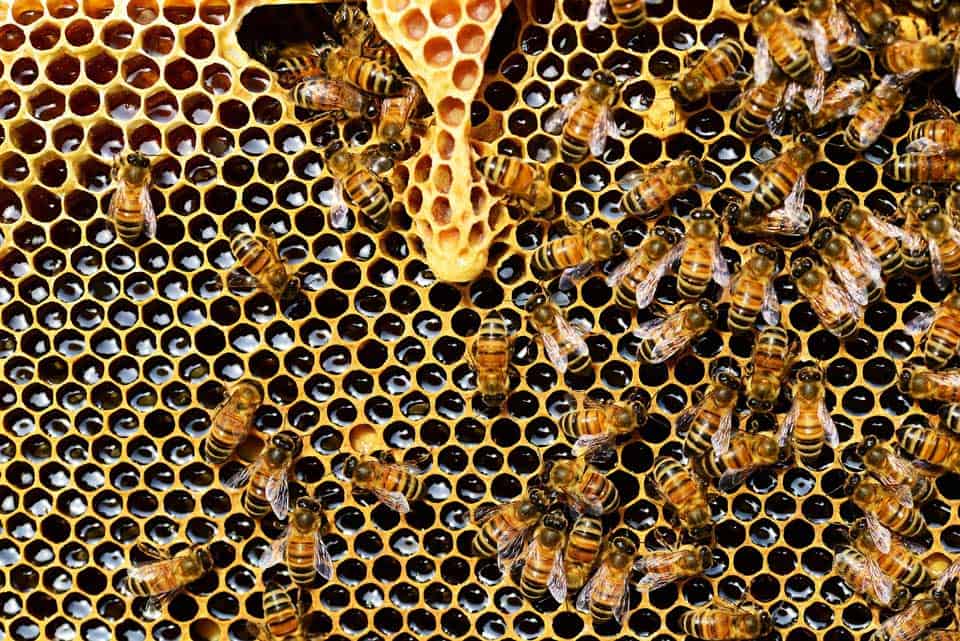
Weather Conditions Affecting Honey Production
External environment can affect honey production in a beehive. If the weather conditions are extreme at a specific time of year, you might find that production has decreased. If it is too hot, too cold, too wet, or too dry, your bees will not produce as they usually do.
Heat is essential for the efficient functioning of a colony. Most beekeepers will be aware that in the winter months bees will not leave the hive and, upon inspection, can be seen to huddle close together to conserve heat. This is a survival trait, along with food storage, which ensures bees can survive in winter months. Unfortunately, a particularly cold spell of weather in the middle of the foraging season can trigger this behavior.
Although it is generally accepted that 50F is the temperature around which bee foraging activity will halt, this does not mean that all bees will be affected in the same way. Again, population is the most fundamental factor as larger colonies can conserve more heat. To complicate things further, certain bees will only collect pollen while other will only collect nectar. Bees in these different roles can often react differently to atmospheric temperature.
A good way to tell if your colony has a low tolerance for the cold is to compare them to other hives in the same area. More often than not you will be able to tell if a certain colony needs a little extra help when things get chilly.
The solution here is again to feed your bees. As their strength builds up so will the colony numbers and, in turn, their ability to forage for nectar in colder weather.
Insufficient Nectar Flow
A strong nectar flow is necessary for bees to begin filling up a super. Many new beekeepers will make the mistake of placing supers on their hive and expecting their bees to automatically fill it. Unless there is a strong flow of nectar though, your bees will not waste their energy building comb. It is also a mistake to assume that there will be nectar available at certain times of the year. For example, flowers can bloom late because a winter has been longer than usual, or if there has not been much rain in that particular year then flowers can dry up sooner than normal. These are conditions that can negatively affect the nectar flow and cause a lack of honey in your hive. So, if your bees are not producing honey, you might need to help things along by feeding them with some sugar water. This might help the colony to get stronger and may motivate them to start building new comb.
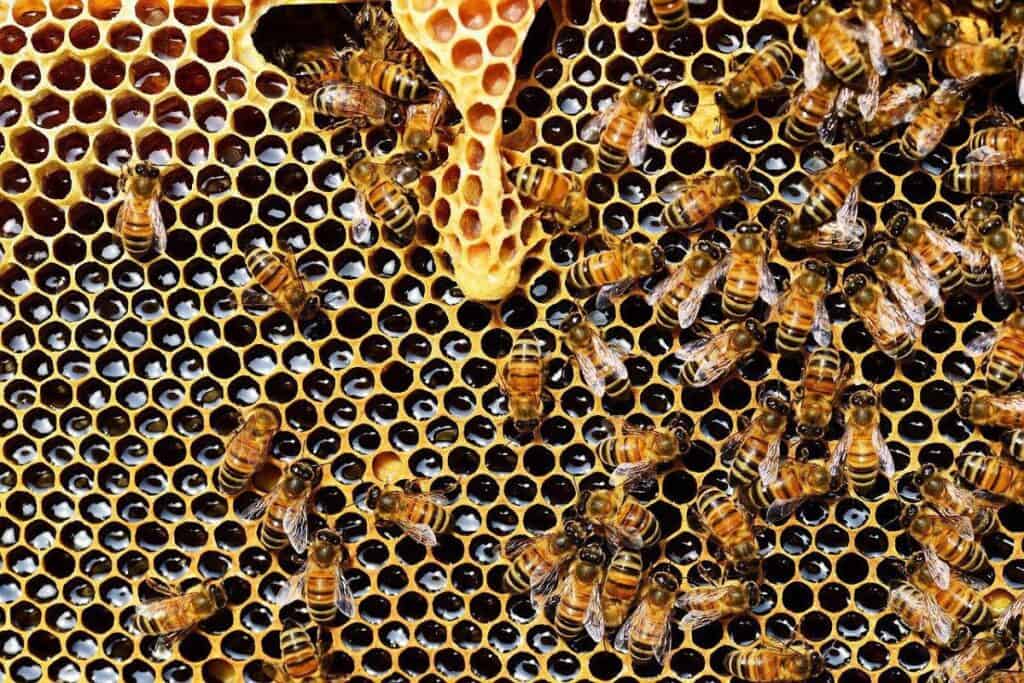
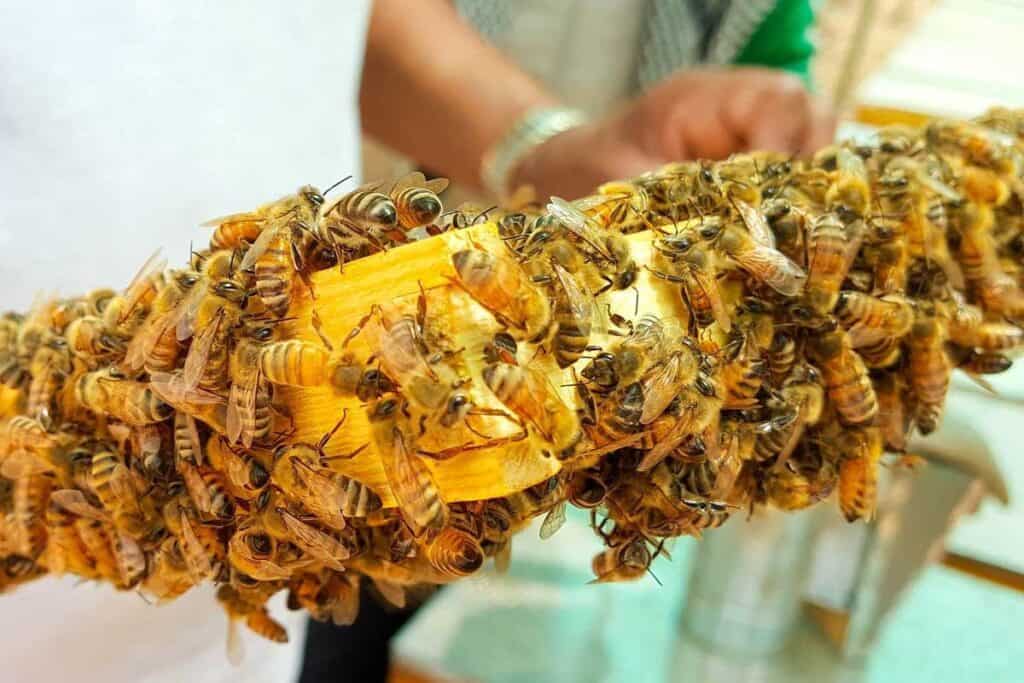
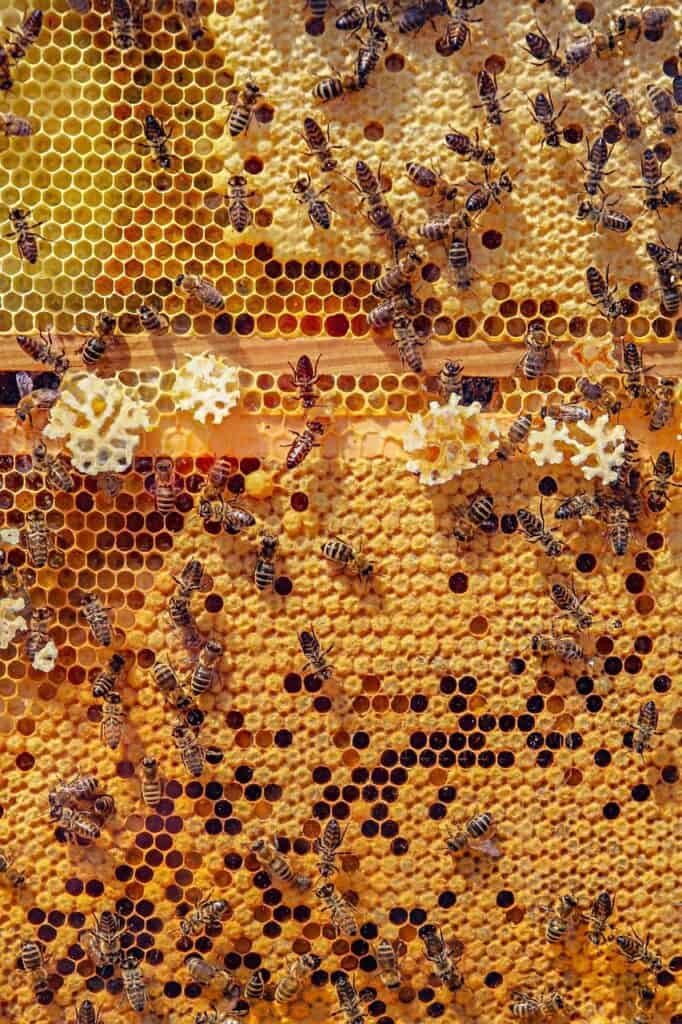
Health Issues Affecting Honey Production
If you cannot find anything amiss with the conditions of your hive, it is crucial that you check on the health of your bees. You will need to ensure that your bee colony is capable of filling a super, which means checking on the size and strength of your colony. To do this, take a look at the brood. A healthy frame will have a capped brood and should be covered in adult bees that are caring for the larvae. If your brood frame is not full of capped brood, you might have a problem.
If your bee population is not strong in number, it is important to avoid adding more space as this extra space is something that they will feel a need to defend, which will weaken them. Too much space and too few bees can also cause issues with temperature control.
Colony diseases are also an issue that may weaken your bees, making them less able to produce honey efficiently. If your population can be ascertained to be sufficient for normal honey production (which takes only a simple inspection), then it is time to start considering this as a possible cause for low productivity.
Viruses such as deformed wing virus and bee paralysis virus can seriously affect the productivity of even a large well-established colony. Such viruses are well known to go hand in hand with a varroa mite infestation, so this is the first thing to check for if you see any signs of these diseases.
Vigilance and Patience
If your hive is not producing the expected amount of honey, the reason could be obvious just as easily as it could be mysterious. In either case, your best plan of action is regular and diligent hive inspection.
Hive inspections should pay attention to such things as whether the queen is laying enough eggs, whether workers are producing honey and raising larvae, whether there is enough space for expansion, and also the tell-tale signs of common diseases and infestations. If this is done carefully and regularly, you should be able to work out just why a hive is not producing honey (or better yet, catch the earliest signs that something may go wrong).
For beekeepers just starting out, this is particularly important and should actually be a priority over the speedy acquisition of any honey harvests.
Why Aren’t My Bees Making Honey – Conclusion
One of the most common concerns among beekeepers is the question, “why are my bees not making honey.” While a healthy hive should produce a surplus of honey, there are times when beekeepers may notice a lack of honey in their hives. We have discussed some of the reasons why there may be no honey in a beehive and how beekeepers can address these issues.
One of the most common reasons for a lack of honey in a beehive is poor weather conditions. Bees need warm, dry weather to forage for nectar and pollen. If there is too much rain, wind, or cold temperatures, bees may not be able to collect enough food to produce honey. In such cases, beekeepers may need to provide supplemental feeding to their hives to ensure that bees have enough food to survive.
Another reason for a lack of honey in a beehive is disease. Diseases such as American Foulbrood and European Foulbrood can decimate a colony, causing the bees to die off and leaving little or no honey behind. Beekeepers should regularly inspect their hives for signs of disease and take immediate action if they notice any problems.
Pests are another common reason why a beehive may not produce honey. Varroa mites, wax moths, and hive beetles can all cause significant damage to a colony, reducing honey production and ultimately leading to the death of the hive. Beekeepers should take measures to control these pests and keep their hives free of infestations.
Finally, an inadequate food supply can also contribute to a lack of honey in a beehive. Bees need a variety of nectar and pollen sources to produce honey. If there is a lack of floral diversity in the area, bees may not be able to find enough food to produce honey. Beekeepers should consider planting a variety of flowers in their area to provide a diverse food source for their bees.
Looking to up your beekeeping game? Check out our latest product recommendations so you can take things to the next level!
Introducing The Top 12 Best Beekeeping Veils For 2024
Introducing The Top 20 Best Beekeeping Gloves For 2024
Introducing The Absolute Best Beekeeping Suits For 2024
The 15 Top Beekeeping Books for 2024
The Top 11 Honey Extractors for 2024
The Top 12 Mason Bee Houses for 2024
Beekeeping Disclaimer:
Beekeeping, like any agricultural activity, involves inherent risks. It is important to understand these risks and take appropriate measures to mitigate them.
Potential risks associated with beekeeping include:
- Bee stings: Honey bees are generally not aggressive but can become defensive if they feel threatened or their hive is disturbed. Bee stings can cause allergic reactions or even anaphylaxis in some individuals, which can be life-threatening. It is important to wear protective clothing and follow best practices when handling bees to minimize the risk of stings.
- Diseases and pests: Bees can be vulnerable to various diseases and pests, including mites, viruses, and bacterial infections. These can have significant impacts on bee colonies, leading to reduced honey production or even colony collapse. It is important to monitor hives regularly and take appropriate measures to prevent and treat diseases and pests.
- Weather conditions: Extreme weather conditions, such as drought or cold temperatures, can affect the health and productivity of bee colonies. It is important to ensure that hives are appropriately sheltered and provided with adequate food and water.
- Environmental hazards: Bees can be affected by environmental hazards such as pesticide exposure, pollution, and habitat loss. It is important to be aware of these hazards and take appropriate measures to protect bee colonies and promote healthy environments for bees.
- Legal requirements: Beekeeping may be subject to local, state, or national regulations, such as registration or inspection requirements. It is important to be aware of these requirements and comply with them.
While beekeeping can be a rewarding and enjoyable activity, it is important to be aware of the potential risks and take appropriate measures to mitigate them. By following best practices and staying informed about the latest developments in beekeeping, beekeepers can help ensure the health and productivity of their hives and contribute to the well-being of bee populations worldwide.
Last update on 2024-04-19 / Affiliate links / Images from Amazon Product Advertising API

